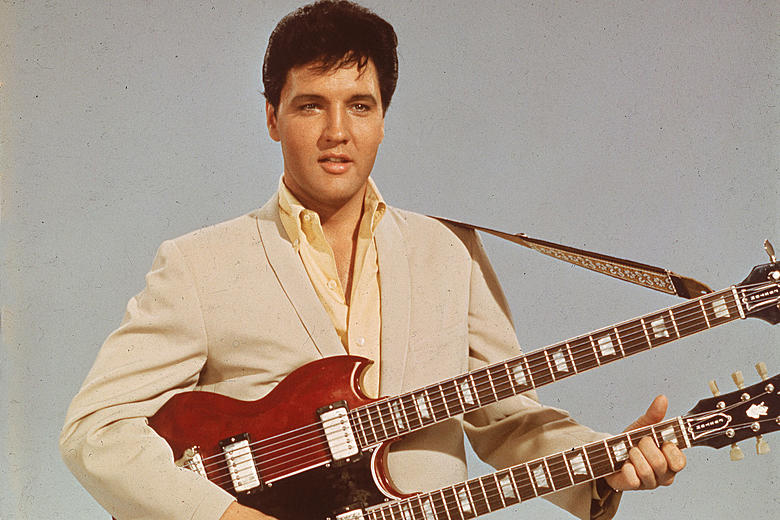
A rough, late-night jam in a small Memphis studio became the sound that split popular music in two and launched a young singer into legend.
Recorded at Sun Studio in mid-1954, “That’s All Right” arrived raw and urgent — a reworking of a 1946 blues tune by Arthur “Big Boy” Crudup that Elvis Presley, guitarist Scotty Moore and bassist Bill Black transformed into something new. What began as a casual experiment quickly became a cultural detonator: faster tempo, an elastic vocal delivery and a slap bass that turned a Delta blues number into an early form of rock ’n’ roll.
The recording was simple, almost accidental. In the cramped Sun Studio room, the trio fed off one another’s energy. Moore’s sharp guitar fills and Black’s percussive bass set a rhythm that let Presley’s voice leap and bend. Sam Phillips, who ran Sun Records, later recognized the sound as a rare collision of Black and white musical traditions — a blend that spoke to a generation ready to push boundaries.
The track’s first radio plays produced an immediate, visceral reaction. When Memphis station WHBQ put the record into rotation, listeners flooded the phone lines demanding more. For many in the region, the song sounded like something they had never heard on commercial radio: bluesy, fast, and dangerously alive.
“It changed everything we thought pop music could be. It wasn’t just a song — it was a new voice for young people, and it crossed lines people had been careful not to cross before.” — Dr. Alan G. Smith, Professor of American Music History
That crossing of lines is central to the song’s legacy. Presley did not invent the blues or rhythm and blues; he borrowed and reshaped them. His version of “That’s All Right” sped up Crudup’s original, married country phrasing to a blues feel, and presented the whole with an unselfconscious swagger that felt new. To older listeners, it sounded reckless. To younger audiences, it sounded like freedom.
Witnesses from the time remember the scramble that followed. Local DJs and fans described a city suddenly buzzing with a sound that demanded attention. Industry people outside Memphis took notice not because a polished hit had been manufactured, but because the recording carried a raw authenticity that cut through the usual gimmicks.
“The phones lit up like a switchboard on a holiday. People wanted to hear it again and again. For Memphis, it was like the soundtrack of a restlessness that had nowhere else to go.” — Susan Hartman, longtime Memphis radio host
The song’s rise also cast light on the uneven cultural terrain of mid-century America. By fusing Black and white musical forms, the record challenged rigid social separations. It offered a musical language that young people of different backgrounds could recognize and claim. That alone explains why historians call “That’s All Right” not simply a debut single, but a milestone in the birth of rock ’n’ roll.
Numbers and milestones followed. The record turned Elvis, a then-unknown truck driver, into a regional sensation and opened doors to bigger stages, recording opportunities and national exposure. It signaled to record labels, promoters and radio programmers that a new audience was hungry for music that reflected its impatience and energy.
For fans now in their older years, the song remains a clear marker — the instant they remember feeling music change. For music historians, it is a textbook example of cultural cross-pollination: a blues tune given a new pace and a new audience, and in the process, spawning an industry that would alter American life.
Watch the video at the end of this article — the grainy footage and the recording’s rough edges still carry the urgency that startled listeners decades ago and set a young singer on a path toward becoming the King of Rock ’n’ Roll…
Video
